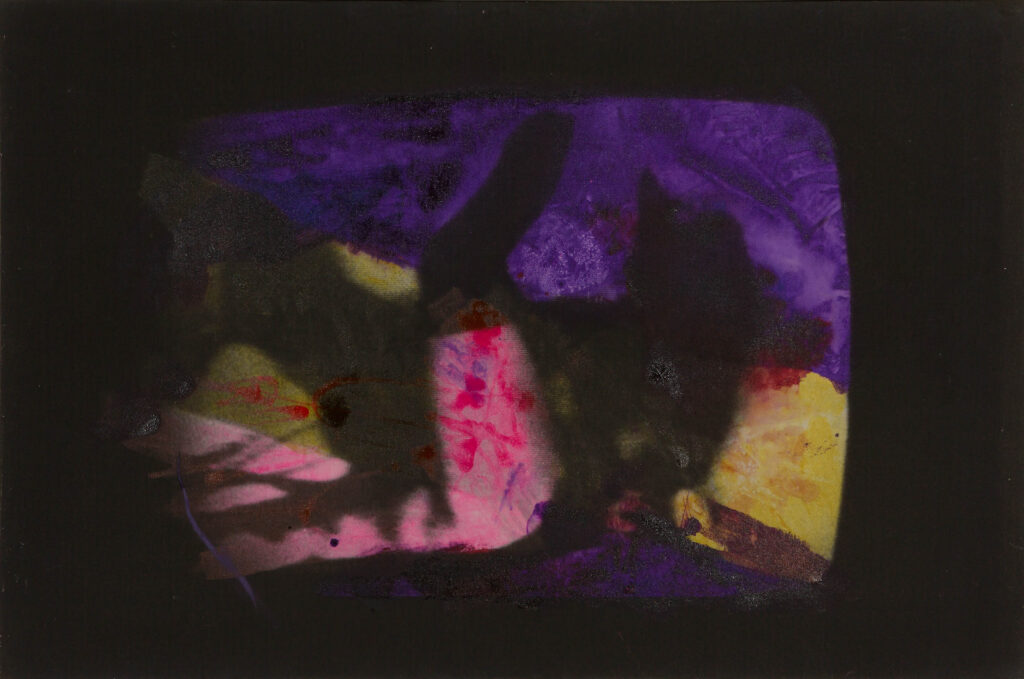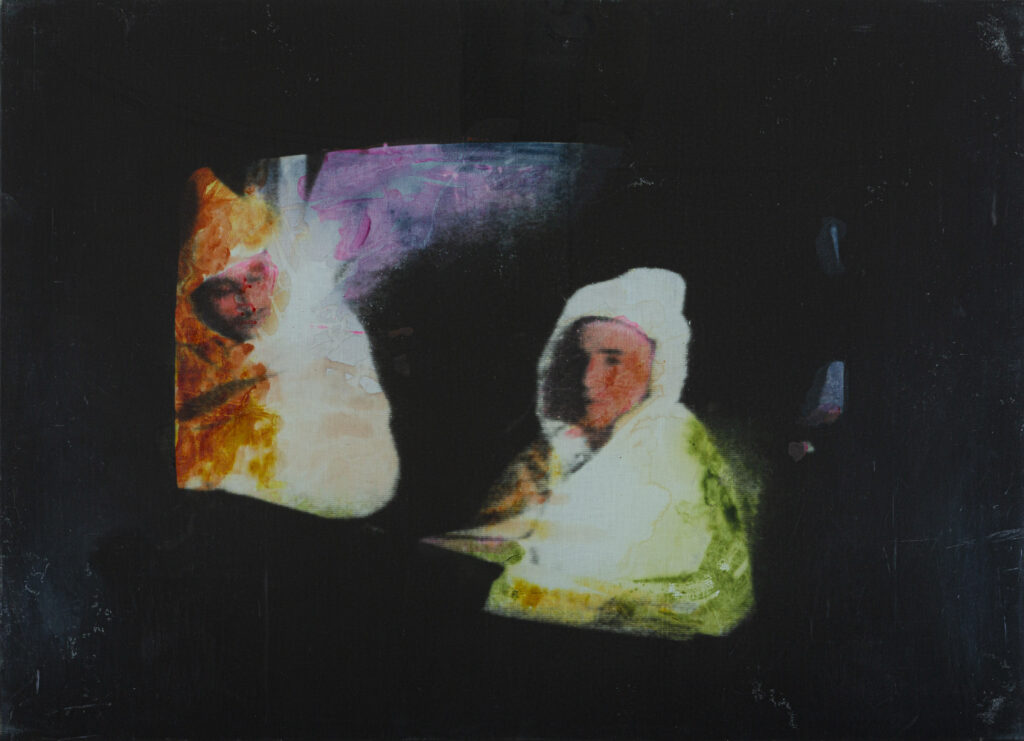HOMS (LIBIA) 1934 – ROMA 1998
He was born on 20 September 1934 in Homs, Libya, where his father, an archaeologist, was in charge of the Leptis Magna excavations
After his family moved to Rome, the young Schifano worked firstly as a shop assistant and then he joined his father, an archaeologist/restorer at the Etruscan Museum of Villa Giulia In the meantime, he began painting
His early works were in the Art Informel style – canvases with thick impasto and highly gestural technique
He had his first solo exhibition in 1959 in the Galleria Appia Antica, Rome, and the following year he took part in the Five Roman Painters collective exhibition at the Galleria La Salita, curated by Pierre Restany: Angeli, Festa, Lo Savio, Schifano and Uncini were the five
At that time, Schifano’s painting underwent a somewhat radical shift…
He signed an exclusive contract with the gallery owner Ileana Sonnabend
In 1962, Schifano visited the United States, where he came into contact with the Pop Art movement, and he was particularly struck by the work of Jim Dine and Franz Kline
His works were shown in the Sidney Janis Gallery of New York, in the New Realist exhibition He was to return to the US at the end of 1963, after mounting various solo exhibitions in major European cities (Rome, Paris and Milan) He ended his association with Ileana Sonnabend
Now the artist began to work on thematic cycles and towards the end of 1964, his desire to revisit art history was rekindled, leading to his works derived from Futurism the following year
At this stage of his work, many discerning critics took great interest in him, including Maurizio Calvesi, Maurizio Fagiolo and Alberto Boatto, as did renowned writers, such as Alberto Moravia and Goffredo Parise In 1967, he presented, at the Studio Marconi, the feature film Anna Carini vista in agosto dalle farfalle, [Anna Carini seen in August by Butterflies], which was followed by a trilogy of films: Satellite, Umano non umano [Human not Human], and Trapianto, consumazione e morte di Franco Brocani [Transplantation, Consumption and Death of Franco Brocani]
His first experimentation with cinema dated back, however, to 1964 and tied in perfectly with the critical obsession Schifano had with the uninterrupted flow of images produced by our technological society
He was involved with a psychedelic rock group, Le stelle di Mario Schifano One of their first concerts, on 28 December 1967 at the Piper Club in Roma, became the first Italian multimedia live show
Between 1966 and 1967 he produced the series Ossigeno ossigeno, [Oxygen, Oxygen] Oasi [Oasis] and Compagni compagni [Comrades Comrades] The last one embodied the political commitment that was to lead Schifano, in those years of torment, to a crisis of ideology and identity, to the extent that he declared he was going to abandon painting
In the early 1970s, he began transferring television images directly to primed canvas, isolating them from the narrative rhythm of the sequences they belonged to and offering them up with a touch of alienating nitro-paint colour First of all, he used the material collected in the United States while location scouting for Laboratorio umano [Human Laboratory], a movie that was never made, for reformulation, and then came the wealth of images broadcast daily by our television stations In these reworkings, Schifano preferred to use new, extremely bright, transparent enamel paints made for industrial production because they dry quickly, enabling him to paint the picture in the exact moment of its appearance and providing him with the opportunity of augmenting his artistic production
In 1971, he exhibited at Vitalità del negativo nell’arte italiana 1960-70 [Vitality of the Negative in Italian Art, 1960-70], curated by Achille Bonito Oliva He had solo exhibitions in Rome, Parma, Turin and Naples and he took part in the Tenth Quadriennale Nazionale, in Rome, and in Contemporanea, an exhibition held in the car park of Villa Borghese, also in Rome, again curated by Bonito Oliva
In 1974 the University of Parma devoted a vast retrospective exhibition to him with about a hundred works illustrating the adventure of his entire painting career, highlighting the main currents He was plagued by ideological and existential doubts, and this forced him to retire to his secluded studio, where he produced works revisiting Magritte, de Chirico, Boccioni, Cézanne and Picabia He even reworked his own works from the 1960s in the Cycle Sintetico dall’Inventario [Synthetic Cycle from Inventory]
In 1976, Schifano took part in the exhibition Europa / America, l’astrazione determinata 1960-76 [Europe/America, Determined Abstraction 1960-76] at the National Gallery of Modern Art in Bologna; two years later, he was again invited to the Venice Biennale, and he presented his Capolavoro sconosciuto [Unknown Masterpiece], a reworking of a famous short story of the same name by Balzac to the Tartaruga Gallery in Rome Various works of his featured in the 1979 exhibition at the Palazzo dei Diamanti in Ferrara, while the following year, he was invited by Maurizio Calvesi to participate in the exhibition Arte e critica 1980, [Art and Criticism 1980] held at the Palazzo delle Esposizioni, Rome
In 1981, Germano Celant selected some of Schifano‘s works for the exhibition Identitè italienne, held at the Centre George Pompidou in Paris, while the same year saw the production of the paintings collected under the title Cosmesi [Cosmesis], followed by the Architettura [Architecture] Biplano [Biplane] and Orto botanico [Botanic Garden] cycles Throughout the 1980s, the artist’s works were shown in various editions of the Venice Biennale, and Schifano featured in the exhibition Italian Art in the 20th Century, at the Royal Academy in London in 1989
In 1985, in Piazza Santissima Annunziata, Florence, in front of six thousand people, he painted the Chimera, a monumental work of four metres by ten, which inaugurated an exhibition on the Etruscans
He married Monica De Bei, with whom he had a son, Marco
Meanwhile, he had one-man-shows at the Palais des Beaux-Arts, Brussels and at the Padiglione d’Arte Contemporanea of Ferrara, where, under the title Inventario con anima e senz’anima [Inventory with Soul and without Soul] he brought together a series of canvases showing his finest works in the field of naturalism The Ferrara show became a travelling exhibition, going to a number of Italian cities and ending up in France, at the Centre d’Art Contemporain in Saint Priest (1992)
On the occasion of its reopening (1990), the Palazzo delle Esposizioni in Rome put on a review of his works, entitled Divulgare [Divulgating], with a considerable number of large-format works specially made for the occasion
Three years later, he exhibited his Reperti [Relics] cycle in a number of Italian galleries Here he took up the theme of prehistoric animals, which had first appeared in his one-man show at the Maeght
In 1996 Schifano paid homage to his “Musa Ausiliaria” – in other words, to television, envisaged as a constant flow of images able to take the form of the only true, all-embracing reality of our age
In the meantime, the artist set up an Internet site through which he related to the world While in the late 1960s he did no more than extrapolate individual shots from television programmes and project them out of context onto the canvas, he now intervened pictorially on the images, changing their sense even further A great exhibition with about forty canvases of this type and a thousand photographs retouched by hand was hosted first by the Memorial da América Latina Foundation in São Paulo (1996), then at the Museum of Fine Arts in Buenos Aires (1997) In 1998 it went on to the Wilfredo Lam foundation in Havana and to Mexico City
During a trip to Brazil he contrived a “happening” in a favela in Rio de Janeiro
In 1997, for the seventh centenary of the construction of Santa Croce in Florence, Schifano won the Premio San Giorgio di Donatello for the polychrome stained-glass windows in the crypt of the Basilica That year he also created the scene designs for the Rome carnival
He died in Rome on 26 January 1998












































